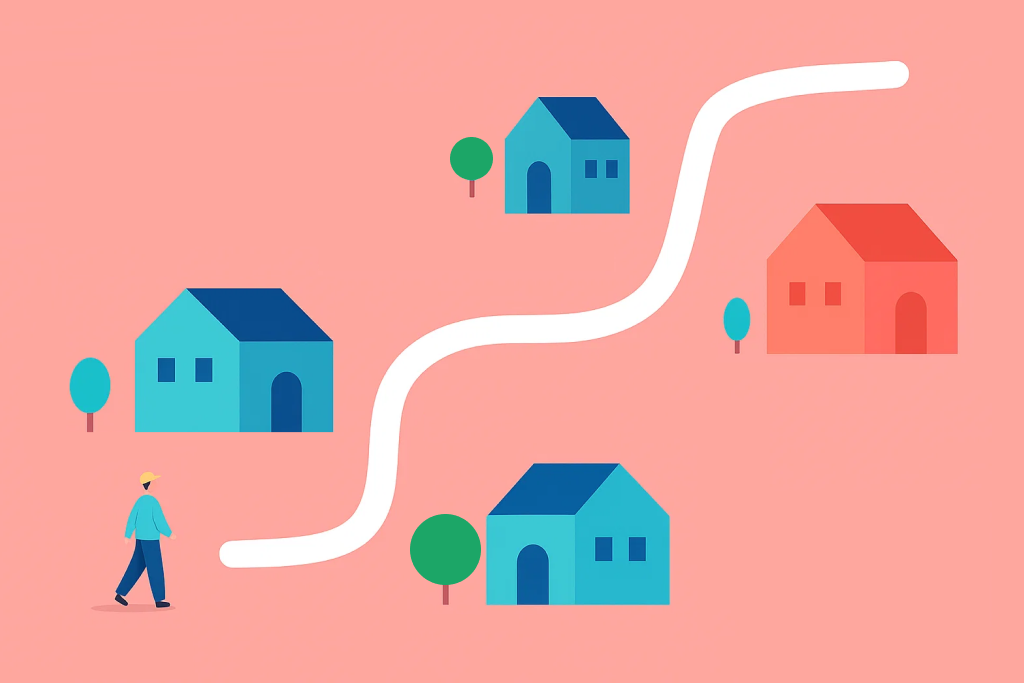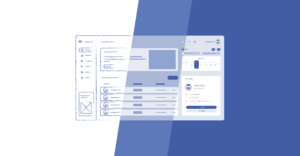When people talk about “UI/UX”, the two disciplines often get merged into one. Yet in reality, they answer very different questions. The User Interface (UI) focuses on the visual side – layouts, colours, typography and buttons. The User Experience (UX) is concerned with whether the product genuinely helps the user achieve their goal.
If UI is about “How does it look?”, UX is about “Does it work for the user?”. Both matter, but in practice UX must come first. A polished interface is worthless if it makes users struggle to reach their objectives.
At a Glance

Why UX Matters More Than Attractive Screens
We recently worked on a project that highlighted this perfectly. The client’s team had done their homework: carefully drafted workflows, sketches of the interface, and a detailed list of dependencies. A UI designer then took over, focusing on polishing the screens.
But one crucial step had been missed. Nobody checked whether the flows reflected the real problem users needed solved. In effect, the team spent time and money perfecting the wrong journey.
The client’s proposed flows looked neat on paper:
- Profile preparation mode
- Application submission mode
- Profile submission to a programme
Yet no real user wakes up thinking “I want to prepare a profile in mode X.” Their actual goal is simple: to apply for a programme successfully. Everything else – filling in a profile, validating data, switching between modes – is secondary.
Tellingly, the brief even noted “Before you can submit your application, you need to fill out your profile.” That instruction is already a warning sign. If a product requires side notes to explain how to use it, the user journey is not intuitive.
The User Journey as the Starting Point
A UX designer’s role is to step back and ask: What is the simplest and clearest path to the user’s goal? Think of it like designing footpaths in a park. You can lay down asphalt where you think people should walk, but if visitors keep cutting across the grass, it means the real path is different.
In our case, the natural journey should have been:
- First, apply for the programme.
- If the application is accepted, unlock the profile submission screen.
- Then, complete the profile and submit.
This approach eliminates unnecessary complexity, matches user expectations, and avoids trapping people in artificial “modes”.
How SPG Approaches UX
At Software Planet Group, we treat UX as a safeguard for project success. During discovery workshops, our team explores user goals, uncovers constraints, and highlights potential stumbling blocks. Only after that do we move into prototyping – sketching fast user journeys and validating them with stakeholders. The final stage is when UI design comes in, making the experience visually engaging.
This mirrors our Agile philosophy: deliver value early, focus on Minimum Viable Products (MVPs), and test assumptions in practice. UX design is not an extra overhead. On the contrary, it is about protecting projects from wasted effort. Without it, you risk ending up with an elegant interface that solves the wrong problem.
The Cost of Getting UX Wrong
Iterating on designs only helps if the underlying user goal is crystal clear. Otherwise, each round of changes becomes an expensive detour. Research backs this up:
- Poor UX can cost companies up to 35 per cent of their sales.
- Every £1 invested in UX may return as much as £100, a remarkable 9,900 per cent ROI.
- Fixing UX mistakes after launch is 10 to 100 times more costly than addressing them during design.
The numbers make it clear: unclear goals don’t just frustrate users, they drain budgets. A lean, human-centred UX process ensures iterations build on the right foundation.
Why Every Project Needs a UX Designer
Every software project needs someone to defend the user journey. A UX designer ensures the product solves the right problem in the simplest way. Then the UI designer can take over to make it visually attractive – but always in service of clarity and function.
At SPG we believe that success comes from combining technical excellence with human insight. That means before choosing fonts or drawing lines, define the user’s real problem. Only then can you create the shortest, most effective path to solving it – and deliver genuine value to both users and businesses.
About the Author
Oleksii Smirnov is a technology entrepreneur and full-stack software professional with more than two decades of experience in Agile delivery, product design, and engineering leadership. Now based in London, he combines technical excellence with human insight to help businesses build products that are not only functional, but meaningful and valuable to their users.


